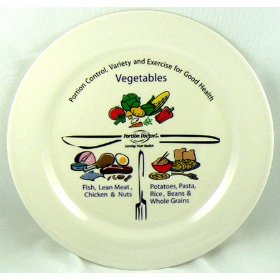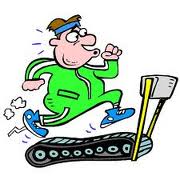Thank you for all the wonderful comments and feedback from the first post in this blog.
I was quite overwhelmed at the response. Thank you, I’m stunned. What was interesting were the private messages that I received from people who I thought were confident and happy in themselves saying that it was almost as if it was exactly what was in their heads that was on the screen in front of them. It goes to show that we aren’t alone in our thoughts on how we view ourselves. Again, thank you for sharing that with me, as I know it’s not easy to say these things out loud.
So end of another week and in my self imposed online weigh in (I’m still wondering if this blog was a good idea) I’m another 2lbs lighter at 12stone 12. I’ve not been in the gym much as I’ve had a horrendous cold that has meant I have been at home for the last few days. However, I have been very good at cutting the unnecessary high sugar snacks out these past two weeks.
So what is the secret to weight loss and why is it not rocket science? Why is nothing I’m doing working?

I asked myself those same questions. I asked them before I threw away lots of money on registrations at fat clubs and after I had failed at the same fat club. The answer was simple. I was eating too much and not moving enough. The mystical formula is simply:
Burn more calories than you consume.
That’s it? That’s the magic formula? Well …yes. Simple when you think about it eh? Although, as I discussed with a friend over twitter the other night, that’s just the basic science behind weight loss. There is also that demon in your brain that you have to contend with too. The weight loss journey for everyone is different. Yes the science of burning of calories may be the same for everyone but the mindset of each person is unique and it’s the mind that is the thing that has to be told how you want to feel and think about yourself. I will discuss that in the next blog, but let’s concentrate on the maths for now.
Eating fewer calories than you burn is easily said, but how do you know that you are eating less calories than you burn. Well that’s when you have to do some simple sums and that’s where keeping a food diary comes in handy. Yes, I who scoffed at mood and food diaries two/three years ago now don’t go a day without writing in one. It’s an interesting exercise and forces you to take a few minutes out of your day (possibly up to four/five times a day depending on if you write in at after each meal or not), and in those few minutes you get to sit, relax and concentrate on you. It’s only a few moments but it’s worth its weight in gold and reaffirms why you are doing this. All you do is account for your food and make a small note about how you feel that day.
So on with the science bit…

So the basic premise is this. Your body needs a set amount of calories depending on your age, current weight and height, to maintain your current weight. This is your basal metabolic rate and it changes as you get older and/or lose weight.
There are two equations in use that give a rough guide to how many calories you will burn in a neutral state of being awake, i.e.: sitting up awake and not digesting any food. (Told you I’d been a researching stuff). They are the Harris-Benedict equation devised in 1919 and the Mifflin et al revision in 1990. As I tend to work in imperial measurements I’ve utilised the earlier Harris-Benedict model here and it’s the one I’ve been using since August 2010. But if you want to be all new fangled and metric, this online calculator will give you the Mifflin version as well http://www.bmrcalculator.org/
So working out your basal metabolic rate, you’re going to need a pen, paper and calculator for this:
For the girls: 655 + (4.35 x weight in pounds) + (4.7 x height in inches) – (4.7 x age in years) then multiply the combined total by 1.2
For the boys: 66 + (6.23x weight in pounds) + (12.7 x height in inches) – (6.8 x age in years) then multiply the combined total by 1.2
So taking myself as an example
I weight 12stone 12lbs (that’s 180lbs), I am 35 years old, and I’m 5ft 7 (and a half as I’m gaining my height back from the stoop I developed whilst fat but I’ll not use that half in this example) in inches that’s 67. So my calculation is:
(655 + 783 +314.9 – 165) x1.2 = 1905.48 – so I round it down to 1905. That’s my basal metabolic rate and what I need to eat to just let my body function if all I did was lie in bed doing nothing all day.
Ok but how do I use that to lose weight?
Weight is converted into calories and that gives us the basic amount of calories per day we can eat to lose one pound of weight a week. It’s approximately 3500 calories for one pound of weight. So to lose 1lb a week I’d need to reduce my calorie consumption by 500 cals per day. My new basic total is 1406 calories per day. But I’m active so I’d actually need a few more than that. This article linked here again will give you more information on the multiplier at the end of the equation that you use to give a more approximate reading. http://www.bmrcalculator.org/ There are more links at the bottom of the page and for the scientist amongst us, links to medical sites where abstracts are free – alas the articles have to be purchased.
WARNING: if you sit at a desk all day you are not moderately active, you are classed as sedentary. Don’t do yourself the injustice of over estimating how active you are. You’ll only hit that wall of why isn’t this working again. I know, I’ve done it myself.
It is simple for the most part, and yes there is maths involved, but I only change my calorie base rate once every 6 weeks. I don’t see the point in me changing it every time I drop a pound as long as I expend more calories than I consume. If in the 6 week period I’ve dropped more than half a stone, then I can revisit the BMR calculation.
Once you’ve worked your BMR out then you have your benchmark to work to. I set myself a personal aim of no less than 1400 calories a day and no more than my BMR. If I can stay within that then I know I am on to a winning week. Why? Because the calculation I’ve used is sedentary, and I try to work out 6 hours a week if I can. It’s all about getting up off your arse and moving.
So remember I said a good Heart Rate Monitor in the first blog? With a heart rate monitor you can now see how many calories you burn in your workouts and you can adjust your diet accordingly. But remember working out doesn’t mean you get to eat more, it just means that you give your body a boost to burning more fat and using up those calories that you’ve consumed. It does also mean that nothing (unless you are allergic to it) is restricted. You can eat everything you want to eat. BUT, and it is a big but, when you start to keep a diary put ALL the nutritional information in, the fats, sugar, carbs etc. This will give you an indication at the end of the week of what your eating pattern is really like. Mine was shocking, it contained so much sugar and carbohydrate it was little wonder I was at a plateau. Now I strive for an even balance between protein and carb (they usually take up no more than one half of my plate combined) and try to have as many vegetables and salad as I can.

Also if you want a McDonalds, bloody well have one. There is no point restricting yourself in what you can or can’t eat, just be sensible, that’s all there is to it. What may happen for you (and it’s what happened to me) is that you start to go off the taste of fast food. A friend had said she cut carbs out of her diet for an entire week… I was horrified. Not all carbohydrate is bad. Learn what carbs your body needs and then cut the rest out. Don’t deny yourselves, that’s not what healthy eating is about.
Anyway I digress…
So the basic science of weight loss is all that weight watchers and slimming world really do. They work out the BMR of average people in a weight and age range and give a ball park figure for that, then convert it into a diet that is low in saturated fat and based on a points system. But it’s a one figure fits all scenario, and alas, that’s the prohibitive part of it. Plus it’s costs a bomb, so this is all something you can do at home. Save yourselves the money and buy a food diary.
There is another issue that you have to be brutally honest with. How many calories are you burning? I’m active outside of work, in work I sit behind a desk all day. I know that to count the calories I would use walking up and down the stairs to the bosses office wouldn’t be worth counting. I probably burn about 80 calories doing that. I had a shock when I wore my HRM to rehearsal with the band. I would have thought that singing alone would burn lots of calories. Nope, 150 tops for a 3 hour rehearsal. Ballroom dancing – foxtrot I burn about 200 cals in a hour, Jive 400 cals in an hour. But when I relate that to proper gym time. An hour with my personal trainer can be anywhere between 400 and 700 calories depending on what exercises he has me doing. BodyCombat I can burn on average 750+ in the hour, BodyJam and Zumba about 600 cals in the hour. Are you noticing the pattern?

You really do have to work at burning the calories if you want to see results. It’s not all about food, exercise is vital and toned muscles burn calories efficiently meaning that you continue to burn calories after a workout while the muscle repairs itself and tones. Niffty eh? The body is amazing.
I am now aiming to lose that 1lb a week by being in deficit of 3500 calories at the end of the week. If I’ve ‘saved’ more then woop I’m on a good run and I might just drop another pound. But again I’m not beating myself up anymore if I don’t lose any weight that week and I stay the same. I may have lost half an inch off my hips instead. But what I will do is re-look at my calculations and then continue. Oh and if you have an iPhone or iPod touch – the My Fitness Pal app is wonderful and is a great alternative to a hand written diary… and it works the BMR out for you too. http://www.myfitnesspal.com/
Be kind to yourselves as you go on your journey.
With love
Krissie
x
Links
http://www.freedieting.com/calorie_needs.html
http://www.ncbi.nlm.nih.gov/pmc/articles/PMC1091498/?tool=pmcentrez
http://www.ajcn.org/content/51/2/241.abstract
http://www.adajournal.org/article/PIIS0002822305001495/abstract






